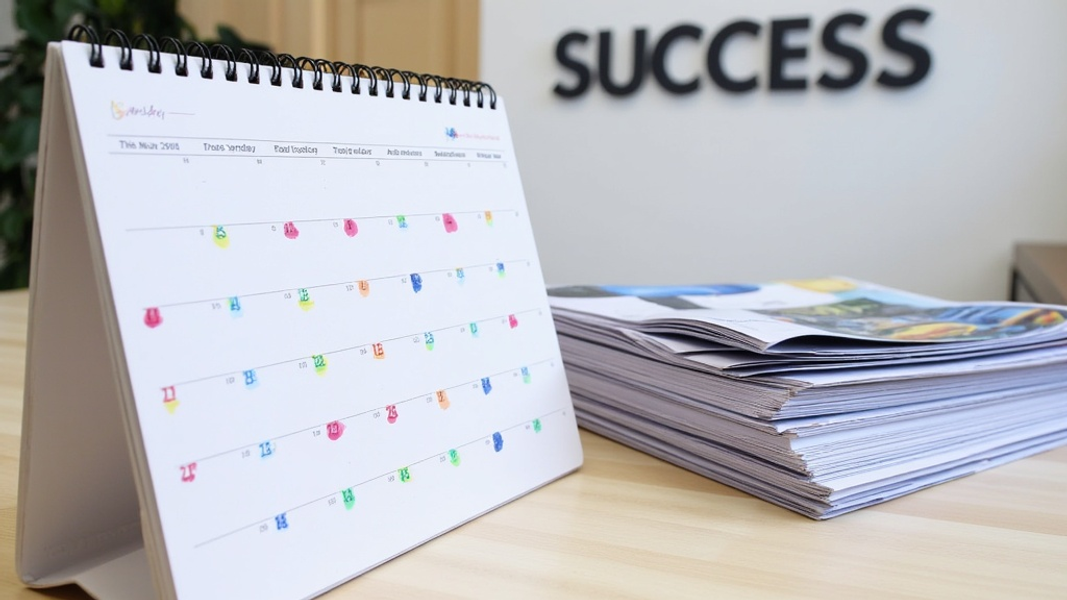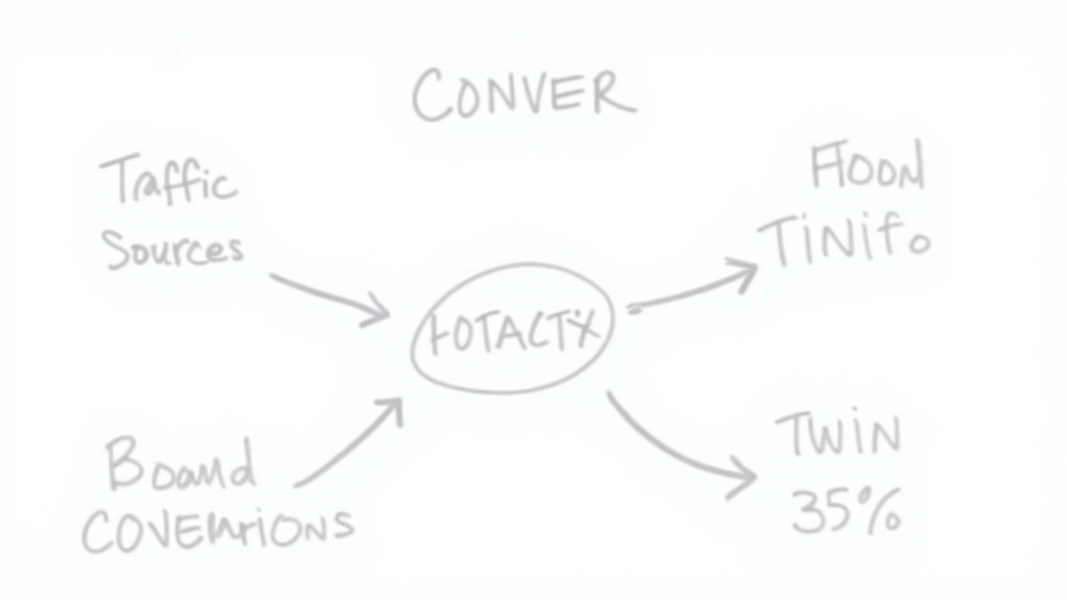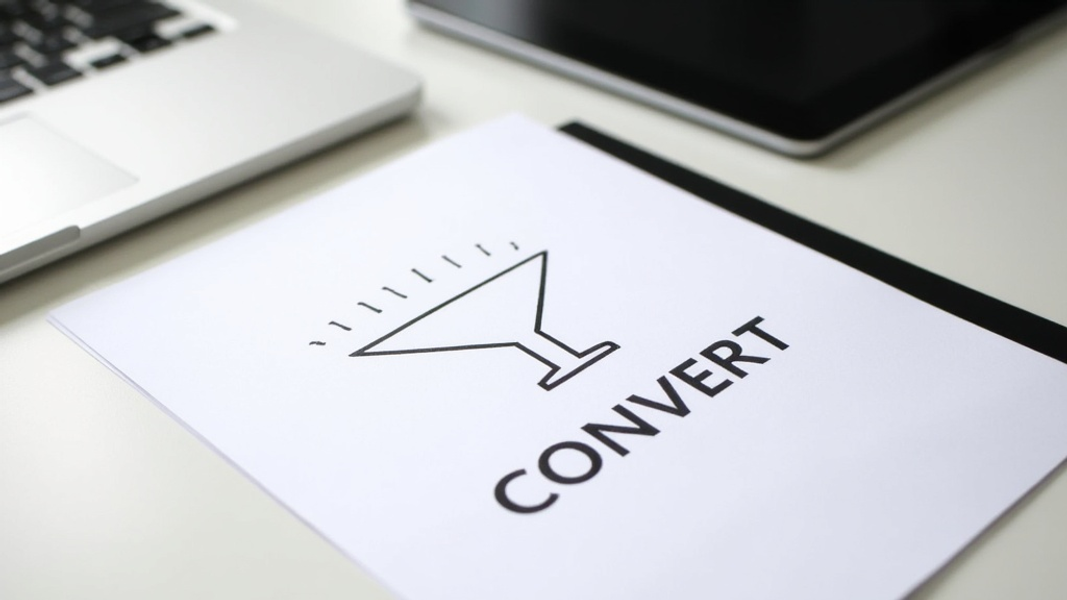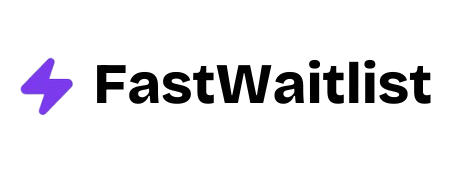
Understanding Conversion Rate
Conversion rate is a key metric for any business with an online presence. It's the percentage of visitors to your website who take a desired action, such as making a purchase, signing up for a newsletter, or filling out a contact form. Understanding and improving your conversion rate is crucial for business success in the digital age.
What is a Conversion Rate?
At its core, a conversion rate is a simple concept. It's the number of conversions divided by the total number of visitors, expressed as a percentage. For example, if your e-commerce site has 1,000 visitors in a month and 50 of them make a purchase, your conversion rate is 5%.
But why does this matter? A high conversion rate means you're effectively turning visitors into customers or leads. It's a clear indicator that your website is doing its job well, providing value to visitors and persuading them to take action.
Calculating Your Conversion Rate
Calculating your conversion rate is straightforward. Here's the basic formula:
(Number of Conversions / Total Number of Visitors) x 100 = Conversion Rate
Let's look at a few examples:
-
An online shoe store gets 10,000 visitors in a week and sells 300 pairs of shoes. Their conversion rate is (300 / 10,000) x 100 = 3%.
-
A B2B software company's landing page receives 5,000 visitors, and 200 people sign up for a free trial. The conversion rate here is (200 / 5,000) x 100 = 4%.
-
A blog post gets 2,000 readers, and 100 of them subscribe to the newsletter. The conversion rate for newsletter signups is (100 / 2,000) x 100 = 5%.
Industry Benchmarks and Setting Goals
Conversion rates vary widely across industries and types of conversions. E-commerce sites typically see conversion rates between 1% and 4%, while B2B companies might aim for 10% or higher for lead generation forms.
Here's a brief overview of average conversion rates by industry:
- E-commerce: 1.84%
- B2B: 2.23%
- Finance: 5.01%
- Media/Publishing: 4.41%
- Travel: 2.35%
Remember, these are just averages. Your specific niche, target audience, and business model will all affect what a "good" conversion rate looks like for you.
When setting goals for your conversion rate, it's best to start by benchmarking against your current performance. If your current conversion rate is 2%, aiming for 2.5% in the next quarter could be a realistic and achievable goal. As you implement optimization strategies, you can gradually increase your targets.
Key Factors Affecting Conversion Rates
Several factors can significantly impact your website's conversion rate. By understanding and optimizing these elements, you can create a more effective and persuasive online presence.
Website Design and User Experience
Your website's design and user experience play a crucial role in conversions. A well-designed site that's easy to navigate and use can significantly boost your conversion rate.
Site speed is a critical factor. In today's fast-paced digital world, users expect websites to load quickly. Even a one-second delay in page load time can lead to a 7% reduction in conversions. Tools like Google PageSpeed Insights can help you identify and fix speed issues.
Mobile responsiveness is another key consideration. With more than half of all web traffic coming from mobile devices, your site must provide a seamless experience across all screen sizes. Use responsive design techniques to ensure your site looks and functions well on smartphones and tablets.
Clear navigation is essential for guiding visitors to your conversion points. Use intuitive menu structures and prominent calls-to-action (CTAs) to help users find what they're looking for quickly.
Content Quality and Relevance
High-quality, relevant content is crucial for engaging visitors and encouraging conversions. Your content should clearly communicate your value proposition and address your audience's needs and pain points.
Compelling copy is essential. Use clear, concise language that speaks directly to your target audience. Highlight the benefits of your product or service, not just its features. For example, instead of saying "Our software has advanced analytics capabilities," you might say "Our software helps you make data-driven decisions that boost your bottom line."
Addressing customer pain points in your content can be highly effective. Show that you understand your audience's challenges and demonstrate how your offering solves their problems. This builds trust and increases the likelihood of conversion.
Clear and persuasive CTAs guide users towards conversion. Use action-oriented language and make your CTAs stand out visually. For example, "Start Your Free Trial" is more compelling than a generic "Click Here."
Traffic Sources and Audience Targeting
The quality of your traffic can significantly impact your conversion rate. It's not just about getting more visitors; it's about getting the right visitors.
Understanding your target audience is crucial. Develop detailed buyer personas that include demographics, interests, pain points, and online behavior. This information can guide your marketing efforts and help you create more targeted, relevant content.
Aligning marketing channels with user intent can improve conversion rates. For example, someone clicking on a Google ad for "buy red sneakers" is likely further along in the buying process than someone reading a blog post about "how to choose running shoes." Tailor your content and offers accordingly.
Personalization and segmentation strategies can significantly boost conversions. Use data from your analytics tools to segment your audience and create personalized experiences. This could include showing different content or offers based on a visitor's location, past behavior, or referral source.

Essential CRO Tools and Techniques
To effectively optimize your conversion rate, you'll need to use a variety of tools and techniques. These will help you gather data, test different approaches, and make informed decisions about your optimization efforts.
Analytics and Tracking
Robust analytics are the foundation of any successful CRO strategy. They provide the data you need to understand your visitors' behavior and identify opportunities for improvement.
Google Analytics 5 is a powerful, free tool that offers a wealth of information about your website traffic and user behavior. It can show you which pages are most popular, where your traffic is coming from, and how users navigate through your site. To set it up, create a Google Analytics account, add the tracking code to your website, and configure your goals and events to track specific conversions.
Heat mapping tools like Hotjar or Crazy Egg provide visual representations of how users interact with your pages. They show where users click, how far they scroll, and which areas of your page get the most attention. This information can help you optimize your page layout and content placement for better conversions.
Session recording software allows you to watch recordings of actual user sessions on your site. This can provide valuable insights into how users navigate your site, where they get stuck, and what might be preventing them from converting. Tools like FullStory or MouseFlow offer this functionality.
A/B Testing
A/B testing, also known as split testing, is a crucial technique for improving your conversion rate. It involves creating two versions of a page or element and comparing their performance to see which one converts better.
-
Choosing elements to test: Start with high-impact elements like headlines, CTAs, images, or form fields. Focus on changes that you think will have a significant effect on user behavior.
-
Setting up split tests: Use A/B testing tools like Optimizely or Google Optimize to create and run your tests. These tools allow you to create variations of your pages and split traffic between them.
-
Analyzing and implementing results: Run your tests for long enough to achieve statistical significance. This usually means getting at least 100 conversions per variation. Once you have clear results, implement the winning version and move on to your next test.
User Feedback and Surveys
Direct feedback from your users can provide invaluable insights for improving your conversion rate.
-
Creating effective survey questions: Ask specific, actionable questions that will give you insights you can use. For example, "What almost stopped you from making a purchase today?" or "What information were you looking for but couldn't find?"
-
Implementing on-site feedback tools: Tools like Qualaroo or Hotjar allow you to add survey widgets to your site, collecting feedback from users in real-time.
-
Conducting user testing sessions: Platforms like UserTesting allow you to watch real users interact with your site and provide feedback. This can uncover usability issues and opportunities for improvement that you might not have noticed otherwise.
Optimizing Key Conversion Points
To maximize your conversion rate, it's crucial to focus on optimizing the key points in your user journey where conversions are most likely to occur. Let's explore how to optimize some of the most important conversion points.
Landing Pages
Landing pages are often the first point of contact between your business and potential customers. They play a crucial role in converting visitors into leads or customers.
Crafting compelling headlines is essential for grabbing attention and encouraging visitors to stay on your page. Your headline should clearly communicate your value proposition and speak directly to your target audience's needs or desires. For example, instead of "Welcome to Our Website," try something like "Boost Your Productivity by 50% with Our Time-Tracking Software."
Optimizing form design and length can significantly impact conversion rates. Keep forms as short as possible, asking only for essential information. Use clear labels, provide helpful hints, and consider using multi-step forms for longer processes. Remember, every additional field in your form can potentially reduce conversions.
Using social proof and testimonials can build trust and credibility. Include customer reviews, case studies, or logos of well-known clients. This reassures potential customers that others have had positive experiences with your product or service.
FastWaitlist offers tools to create high-converting landing pages that can help you implement these strategies effectively.
Product Pages
For e-commerce sites, product pages are where the magic happens. They need to provide all the information a customer needs to make a purchase decision.
Enhancing product descriptions and imagery is crucial. Use high-quality images that show your product from multiple angles. Consider adding videos or 360-degree views for complex products. Write detailed, benefit-focused descriptions that answer potential customer questions.
Implementing dynamic pricing strategies can help you stay competitive and maximize revenue. This might include offering discounts for bulk purchases, showing comparative pricing, or highlighting limited-time offers to create urgency.
Showcasing related products and upsells can increase average order value. Display complementary products or accessories that enhance the main product. For example, if someone is looking at a camera, you might suggest memory cards, cases, or tripods.
Checkout Process
A smooth, user-friendly checkout process is crucial for converting interested shoppers into paying customers.
Simplifying the purchase journey is key. Minimize the number of steps required to complete a purchase. Offer guest checkout options for those who don't want to create an account. Use progress indicators to show customers how far along they are in the process.
Addressing cart abandonment is crucial for recovering potentially lost sales. Use exit-intent popups to offer discounts or address common concerns when a user is about to leave. Implement cart abandonment emails to remind customers of items they've left behind.
Offering multiple payment options can cater to different customer preferences. Include popular options like credit cards, PayPal, and digital wallets. Consider offering buy-now-pay-later options for higher-priced items.
Email Marketing
Email marketing remains one of the most effective channels for driving conversions. Here's how to optimize your email efforts:
Personalizing email content can significantly improve engagement and conversion rates. Use the recipient's name in the subject line and body of the email. Segment your list and send targeted content based on past purchases, browsing behavior, or demographic information.
Optimizing subject lines and preview text is crucial for improving open rates. Keep subject lines short, clear, and benefit-focused. Use the preview text to provide additional context and entice the recipient to open the email.
Implementing segmentation and automation can help you send the right message to the right person at the right time. Set up automated workflows for welcome series, abandoned cart reminders, and post-purchase follow-ups.
FastWaitlist offers tools to help grow your email list effectively, which can boost your email marketing results.

Advanced CRO Strategies for 2025
As we move further into the digital age, new technologies are opening up exciting possibilities for conversion rate optimization. Here are some advanced strategies to consider:
AI-Powered Personalization
Artificial Intelligence (AI) is revolutionizing the way we approach personalization in marketing. By analyzing vast amounts of data, AI can create highly personalized experiences for each visitor.
Implementing machine learning algorithms can help you predict user behavior and preferences. These algorithms can analyze factors like past purchases, browsing history, and demographic information to recommend products or content that are most likely to resonate with each individual user.
Creating dynamic content experiences takes personalization to the next level. Instead of creating multiple versions of a page for different segments, AI can dynamically adjust page elements in real-time based on user behavior and characteristics. This could include changing headlines, images, or product recommendations as the user interacts with your site.
Predictive analytics for user behavior can help you anticipate customer needs and preferences. By analyzing patterns in user data, you can predict which products a customer is likely to be interested in next, or when they're most likely to make a purchase. This allows you to send targeted offers or reminders at the most opportune moments.
Voice Search Optimization
With the rising popularity of voice assistants like Alexa, Siri, and Google Assistant, optimizing for voice search is becoming increasingly important.
Adapting content for voice queries involves focusing on natural language and long-tail keywords. Voice searches tend to be more conversational and question-based than typed searches. For example, instead of "best running shoes," a voice search might be "What are the best running shoes for beginners?"
Optimizing for featured snippets can help you capture voice search traffic. Voice assistants often read out featured snippets in response to queries. Structure your content to directly answer common questions in your industry, using clear, concise language.
Integrating voice-activated CTAs can make your site more accessible to voice users. This might include adding commands like "Add to cart" or "Book appointment" that can be activated by voice.
Augmented Reality (AR) Integration
Augmented Reality is creating new possibilities for engaging customers and driving conversions, especially in e-commerce.
Virtual try-on experiences for e-commerce can significantly reduce uncertainty for shoppers. For example, a furniture retailer could allow customers to see how a couch would look in their living room using their smartphone camera. A cosmetics brand could let customers virtually try on different shades of makeup.
Interactive product demonstrations using AR can provide a more engaging and informative experience than static images or videos. For example, a car manufacturer could create an AR experience that allows potential customers to explore the features of a car in detail, opening doors, looking under the hood, or even taking a virtual test drive.
AR-enhanced user manuals and guides can improve the post-purchase experience, potentially leading to higher customer satisfaction and repeat purchases. For example, an electronics company could create an AR app that overlays instructions directly onto the product when viewed through a smartphone camera.
Measuring and Reporting CRO Success
To ensure your CRO efforts are effective, it's crucial to measure and report on your success accurately. This involves tracking the right metrics and presenting your findings in a clear, actionable way.
Key Performance Indicators (KPIs)
When measuring CRO success, focus on these key metrics:
Conversion rate by channel and device: Track how your conversion rate varies across different traffic sources (e.g., organic search, paid ads, social media) and devices (desktop, mobile, tablet). This can help you identify which channels are most effective and where you need to improve.
Average order value and customer lifetime value: These metrics help you understand the long-term impact of your CRO efforts. If you're increasing conversions but average order value is decreasing, you may need to adjust your strategy.
Return on ad spend (ROAS): This metric helps you understand how effectively your paid advertising is driving conversions. Calculate it by dividing the revenue generated from ads by the cost of those ads.
Creating Actionable Reports
Effective reporting is key to getting buy-in for your CRO efforts and guiding future strategy.
Visualizing data for stakeholders can make your reports more engaging and easier to understand. Use charts and graphs to illustrate trends and comparisons. Tools like Google Data Studio or Tableau can help you create professional-looking dashboards.
Identifying trends and opportunities is crucial for ongoing optimization. Look for patterns in your data that suggest areas for improvement. For example, if you notice that mobile conversion rates are significantly lower than desktop, that could indicate a need to improve your mobile user experience.
Setting future optimization goals based on your findings helps ensure continuous improvement. Use your current performance as a baseline and set realistic, measurable goals for the next reporting period.
Conclusion
Mastering conversion rate optimization is an ongoing process that requires constant learning, testing, and refinement. By understanding the key factors that influence conversions, utilizing the right tools and techniques, and staying ahead of emerging trends, you can significantly improve your website's performance and drive business growth.
Remember, there's no one-size-fits-all approach to CRO. What works for one business may not work for another. The key is to continually test, learn, and iterate based on your specific audience and business goals. With persistence and a data-driven approach, you can unlock the full potential of your digital presence and achieve remarkable results.
FAQs
What's a good conversion rate?
A good conversion rate varies by industry and type of conversion. Generally, a conversion rate between 2-5% is considered average, while anything above 5% is excellent. However, it's more important to focus on improving your own conversion rate over time rather than comparing it to broad averages.
How long should I run an A/B test?
The duration of an A/B test depends on your traffic volume and the size of the change you're testing. As a general rule, you should run a test until you've reached statistical significance, which usually means at least 100 conversions per variation. This could take anywhere from a few days to several weeks.
Can CRO negatively impact SEO?
When done correctly, CRO should not negatively impact SEO. However, certain CRO practices, like using different content for search engines and users (cloaking), can harm your SEO. Always ensure your CRO efforts align with SEO best practices.
How often should I be optimizing my website?
Optimization should be an ongoing process. Regularly review your analytics, conduct user testing, and run A/B tests. A good practice is to always have at least one test running and to review your overall CRO strategy quarterly.
What's the difference between macro and micro conversions?
Macro conversions are your primary business goals, such as completed purchases or lead form submissions. Micro conversions are smaller actions that indicate engagement and progress towards macro conversions, like newsletter sign-ups, video views, or adding items to a cart.
